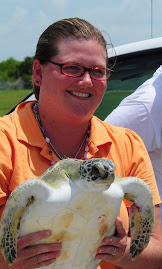In my last blog I talked about how I wasn’t feeling half-full and I really didn’t want to change my thinking, but it is a new day and I have a new outlook, or at least I’m trying.
Chapter 7: The Way Things Are
Sometimes it is really hard to maintain a positive attitude when everything seems to be working against me, but in reading this chapter I know that it is worth trying and I need to learn to take the good with the bad. There are a couple of quotes in this chapter I found that I need to adopt as learning guides in my life. The first is “The risk the music invites us to take becomes a joyous adventure only when we stretch beyond our known capacities, while gladly affirming that we may fail” (pg. 103). I have always been a risk taker, but then often fall apart when I don’t achieve whatever I set out to achieve. This quote is a gentle reminder to me that I must accept the fact that I may fail, yet not give up the risk. The second quote is “Nature makes no judgment. Humans do. And while our willingness to distinguish good and evil may be one of our most enhancing attributes, it is important to realize that “good” and “bad” are categories we impose on the world—they are not of the world itself” (pg. 105). This is probably the biggest eye-opener for me. In working with nature this summer I learned more about the circle of life and the natural food chain as well as how to accept that as the way it is. I need to bring this example into my life and understand that things happen for a reason and people come into our lives for a reason. There is no right or wrong, good or bad imposed upon me. I make that choice and I have to be the one to live with whatever choice I make at that moment and make the most of the outcome.
Chapter 8: Giving Way to Passion
Passion, what is passion? I have a theme that I try to instill in my students and that is to dream big, laugh a lot, and live life to its fullest. This theme is posted in my classroom and I refer to it often. I wish I could adopt this as the theme for my life. In this chapter I learned it’s important to avoid the downward spiral and to embrace the possibilities and that I need to participate wholly and not hold back on my dreams and pursuits. I will be reevaluating my passion. Am I actually moving forward or am I just sitting in neutral? What do I need to do to give way to my passion?
Chapter 9: Lighting a Spark
The story about his father really touched my heart. His statement “Certain things in life are better done in person” (pg. 123), is so true. I have always had a face-to-face policy when discussing serious matters or concerns. I’m an expression reader. I have to know that the other person completely understands my concerns and is accepting and I find that it is easiest to know this when looking someone in the eyes. I like the idea of enrollment as it is discussed in this chapter. In order to be a light for someone else, the passion has to be evident through my eyes. I think about my students. When I’m teaching subject matter that I’m excited about they are much more engaged, but when I’m teaching something that I’m not dedicated to, the connection and energy is lost and my students quickly lose interest.
I know I’ve talked a lot about my summer job, but now I’m seeing that’s because it’s something I’m incredibly passionate about. I found this summer that I have a knack for bringing positive energy into an environment. I am generally a pretty bubbly and energetic person and when I’m excited about something, it is evident to anyone in the vicinity. Through this passion, I found a way to bring smiles to faces that had been missing them for some time and I began to see positive connections being made with people around me. In thinking back, I now believe that the best way to light a spark for others is to wholeheartedly enroll in the objective and share the passion.
Chapter 10: Being the Board
This chapter made me realize that sometimes I tend to blame others and situations for how I am feeling or responding, but ultimately it’s my problem and I have to be the one to decide how to handle each person or situation when it comes my way. This week I have been really down in the dumps. First of all, I’m in a full leg cast which limits my mobility and I am unable to be as independent as I usually like to be. On top of this, my birthday is coming up and I had plans to attend a show this weekend. I was very excited about this show and time with friends, but received an email from Ticketmaster that the show has been cancelled and this knocked me down yet another notch. Throughout the week, I’ve been in a crappy mood and thinking negatively, but I now realize that I’m the only person that can determine my mood and how I’m going to react to the cancellation of the show. By making myself the board in this situation, I realize that since my friends will still be with me, I will still be out of the house, and we will still enjoy a delicious dinner, it’s all good! I’m choosing to change my attitude and I know tonight will be a blast.
Chapter 11: Creating Frameworks for Possibility
I find that this chapter helps me recognize the importance of setting boundaries, avoiding the downward spiral, and enrolling in the objective. When I set boundaries I find that it’s easier to achieve the goal, because I’m not distracted from outside interferences. As for avoiding the downward spiral, I find this can be accomplished best by being passionate and enrolling in the subject at hand. These last two chapters help to tie this book together for me. The story about the little girl with leukemia really touched me because my dad has leukemia. I give the teacher kudos for her assistance in helping her students see the importance of accepting this little girl, but in reading Joann’s blog I was intrigued “The story about the teacher shaving her head brought tears to my eyes. However, I must admit I am at a bit of a loss. The problem was the girl's and the solution came from the outer world. The girl did not make that happen, the teacher did. Am I misreading this example or I am confusing the practice?”, so I reread this section to see what I could gain from this story. This little girl didn’t solve her own problems, but it was done for her by the teacher. I think the connection may have been intended to recognize the teacher for her efforts and passion for her students in this situation.
Chapter 12: Telling the WE Story
This chapter is an excellent ending to an equally excellent book. This chapter discusses what connects us, our goals, dreams, and possibilities. I have been taught over the years to always approach items of conflict with an “I” instead of “You”. I think this is what this chapter means. When explaining my frustrations with someone or something I try to word it in such a way that it brings this issue back to me and avoids placing blame which ultimately reduces defensiveness and allows for a team solution to be made. I have found this to be an effective problem solving technique over the years and I’m going to do my best to remember it in the future.
I have thoroughly enjoyed this book and the positivity it has brought back to my life. I will keep it close at hand and will take time to reference it whenever my glass begins to empty or when I just need to be uplifted a little.
Zander, R. & Zander, B. (2000). The art of possibility. New York: Penguin.
Friday, October 23, 2009
Subscribe to:
Post Comments (Atom)



I think that Zander's book was very inspirational and should have maybe been introduced earlier in the program. I think that someone that is wanting to look at the book seriously needs to move past the facade of it being another "self help" book and take it for what it is trying to tell you: you are in control of your own reality. It's not really self actualization, but more of the modification of internal thought processes and learning how to remove negative thought processes from your thinking. This is a lot easier said than done, but anything worth doing will take time and effort if you want to see its real results. One cannot simply transform his body overnight by going to the gym one time. The same can be said about this book. There are no magic secrets. No quick fixes. It is something that is gradual and will take a lot of time to see any results from your efforts, but you will see results. On a purely metaphysical level, you will attract what you are sending out. If you have an entirely negative attitude the entire time, your outward and inward environment will display this. The same can be said of someone who has an entirely positive attitude the entire time. But again, you have to take this rationale with a grain of salt. You will not win the lottery if you are positively thinking about winning the lottery 24-7. There are other schools of thought that subscribe to these philosophies, but that is not what Zander is referring to. In short, this book was a welcome boost to a "month-niner" such as my self. As we reach our final peak and begin our descent downward toward the finishing line, this book gave some really good insight into what is needed to "keep the eye on the prize" and how I can actualize what I want to obtain in a realistic manner.
ReplyDeleteI'll take it that you're in a bit better of a place than earlier. That's good. I'm glad the book helped.
ReplyDelete